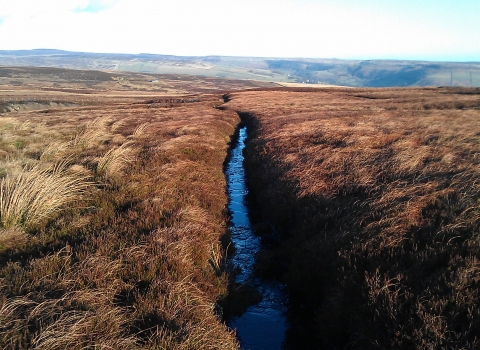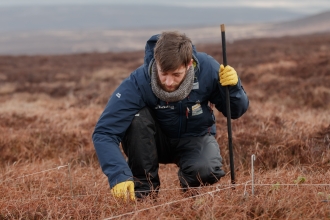How did our peatlands become degraded?
Formed over thousands of years, it has taken just six decades to devastate Yorkshire's peatlands.
Most damage occured in the 1950s and 1960s, when the government attempted to drain the land to make it more productive for agriculture. Drainage channels, known as grips, were dug across huge areas of peatlands. These grips criss-cross the landscape today.
Drainage channels or 'grips' running across a moor.
The drainage channels meant that the peatlands were less effective at holding water than they were previously. Rainfall ran off the land into the channels, causing the water level to drop dramatically. Sphagnum and other important plants for forming peat were unable to survive without the water-saturated environment they need to grow.
As the plants on the surface of the peatland die, the peat underneath them is exposed. This has two major impacts:
- the carbon stored within the peat is released into the atmosphere
- the peat is washed into the drainage channels and ends up in our water system
As water runs down into the channels, it erodes down the sides and makes them steeper. This causes the water to flow even more quickly off the peatlands, taking more peat with it, and increases the rate of erosion even more.
What is left is huge areas of bare, exposed peat broken up by deep gullies.
Bare peatlands. Photo: Beth Thomas
In other areas of the UK, peat is extracted from peatlands for compost and for fuel. This is no longer an issue in Yorkshire.
How can we halt the problem?
Yorkshire Peat Partnership carry out restoration works on our peatlands to halt the damage being caused, and restore these habitats to their former glory.


